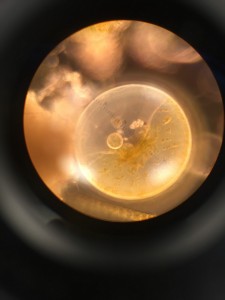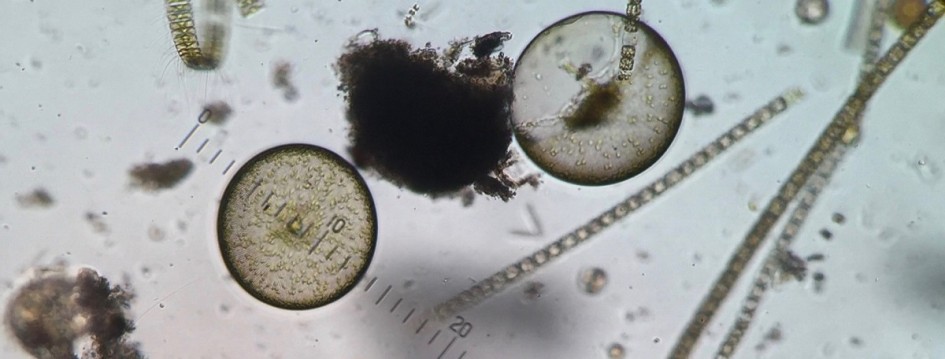Coscinodiscus:
Coscinodiscus is cylindrical in shape. The internal organelles, including chloroplasts can be seen with a microscope. They seem to resemble bike tires with its spokes or a circular honey comb pattern. Its external structure is made up of silica, glass. They are also drifters so they have no control over their movement and always move with the tides.
____

____
Coscinodiscus is a species of diatom which belongs to a group of ocean algae—phytoplankton. Coscinodisucs is photosynthetic using light to produce organic matter. They are very small, measuring around 150um in length and many can be found within a single drop of water. In fact, hundreds of individual coscinodiscus were observed in a drop of water. Coscinodiscus and other phytoplankton play an invisible role, its ability to photosynthesize allows it to produce oxygen. Oxygen is vital to  our well being and just about everything else alive on the earth. At times they can grow into large mats and then these microorganisms can become visible to the naked eye. Satellite images of ocean waters with smears of turquoise, brick red, or algae green are reminders of the importance of phytoplankton and how our health depends on their activity. Coscinodiscus range of existence from the warm tropic waters up until the cold Arctic ecotone waters, they can’t tolerate colder waters. They are widespread and area good indicator of rising warming waters. Their distribution could allows us to tract global warming through the digital imaging of their chlorophyll. A migration for coscinodiscus, in their range, could indicate warming ocean temperatures.
our well being and just about everything else alive on the earth. At times they can grow into large mats and then these microorganisms can become visible to the naked eye. Satellite images of ocean waters with smears of turquoise, brick red, or algae green are reminders of the importance of phytoplankton and how our health depends on their activity. Coscinodiscus range of existence from the warm tropic waters up until the cold Arctic ecotone waters, they can’t tolerate colder waters. They are widespread and area good indicator of rising warming waters. Their distribution could allows us to tract global warming through the digital imaging of their chlorophyll. A migration for coscinodiscus, in their range, could indicate warming ocean temperatures.
Sources:
- Stefanie F. Kühn et al. pH effect on the susceptibility to parasitoid infection in the marine diatom Coscinodiscusspp. (Bacillariophyceae)
- Coscinodiscus – Kudela Lab – University of California, Santa Cruz








